American infrastructure is always being improved upon, as roads are repaved, lanes are added, and lights and signage are replaced or updated. In order for these things to take place, construction and road workers need to be able to have safe access to the areas being worked on. Areas of the road that are being worked on by state employees are known as work zones, and the traffic laws in these areas differ from regular sections of road to keep workers and drivers safe. Violating these different rules can result in steep penalties, but they’re easy to follow when there is a full understanding of them.
What Are Some of the Unsafe Driving Practices That Happen in Work Zones?
The state of New York takes reckless driving in work zones very seriously, not only for the safety of workers and drivers, but also because accidents in work zones can be extremely costly. Some mistakes that are often made by drivers in work zones include:
- Ignoring signs indicating a reduced speed limit
- Merging without using blinkers when lanes are shortened
- Being distracted, such as talking or texting on a cell phone, talking to passengers, or eating and drinking
- Tailgating other vehicles
- Speeding while passing work or emergency vehicles that are stopped on the side of the road
These mistakes are often made by people who are in a hurry. Impatience combined with long periods of time in which construction takes place can lead to frustration in drivers who frequent these areas, and that can lead to reckless construction zone driving. Remaining calm and following all of the signage present in construction zones is the best way to avoid any accidents or being pulled over.
How Can I Drive More Safely in Work Zones?
Work zones can be inconvenient and cause delays in commutes for many drivers but trying hard to remain safe and drive carefully while in a work zone can save a lot of legal headaches down the road. The New York State Governor’s Traffic Safety Committee has provided some suggestions as to how drivers can exercise a higher level of caution in work zones, and those suggestions are as follows:
- Always make sure to slow down when approaching a work zone. Even if the work zone appears far away, it is wise to begin slowing down as quickly as possible. For example, if there is a road sign that indicates a work zone beginning in 1,500 feet, a driver would reach that zone in 17 seconds at 60 miles per hour.
- Rear end crashes are the most common type of collision to take place in work zones because some people neglect the road signs or do not slow down quickly enough. Due to this, watching out for people tailgating is important to avoid being rear-ended in a work zone. Allow tailgaters to pass at any time it is safe to do so.
- If the weather is bad, drive even slower than the posted speed limit signs says to. Inclement weather, such as snowstorms and ice, makes it more difficult to stop on time in the event of an emergency.
- Drivers should keep a safe and extended distance from their car and the car in front of them. Keeping a safe distance between themselves and any other drivers or items, such as barriers, equipment, parked trucks, and workers, will help keep everyone safe.
- Do not drive on the shoulder or the median to get through the work zone faster. Not only is this illegal, it is also extremely dangerous because workers are frequently positioned in those areas.
What Are the Consequences for Driving Recklessly in a Work Zone?
The state of New York penalizes drivers heavily for speeding in work zones because it is extremely dangerous and leads to many accidents each year. People who are convicted of speeding in work zones can expect hefty charges, and in some cases, the loss of their license.
Fines
The main way New York punishes drivers who choose to speed in work zones is through fines. These fines can range from as low as $90 to as high as $600 depending on the specific incident in question. Here are the specific ways fines for speeding in work zones break down:
- For driving between 1 and 10 miles per hour over the speed limit, the fine can cost anywhere between $90 and $150.
- For driving between 11 and 30 miles per hour over the speed limit, the fine can cost anywhere between $180 and $300.
- For driving 31 or more miles per hour over the speed limit, the fine can cost anywhere between $360 and $600.
Points
The state of New York also punishes drivers who are convicted for speeding in a work zone by applying points to their license. The point system is used to keep track of high-risk drivers and results in the suspension of a driver’s license if they receive too many points in a certain amount of time. Here’s how points are given in work zone speeding cases:
- Speeding between 1 and 10 miles per hour over the speed limit results in the addition of 3 points to a driver’s license.
- Speeding between 11 and 20 miles per hour over the speed limit results in the addition of 4 points to a driver’s license.
- Speeding between 21 and 30 miles per hour over the speed limit results in the addition of 6 points to a driver’s license.
- Speeding between 31 and 40 miles per hour over the speed limit results in the addition of 8 points to a driver’s license.
- Speeding 41 or more miles per hour over the speed limit results in the addition of 11 points to a driver’s license, and that driver will most likely have their license suspended.
DRA
The Department of Motor Vehicles in New York gives and extra fine to drivers who receive 6 or more points on their license in 18 months. The DRA, also known as the Driver Responsibility Assessment fee, is a fee of $300. Drivers who exceed 6 points on their license within 18 months will also receive an additional $75 fee for each point they get after 6. The DRA is paid directly to the Department of Motor Vehicles.
Surcharges
Every speeding ticket given out in a work zone comes with a mandatory surcharge from the state that is in addition to any fines or DRA charges the driver may receive. If the driver was in a city when they received their ticket, their surcharge will be $88. If they were in a city, their surcharge will be $93.
License Suspension
A driver who receives 2 convictions for work zone speeding within 18 months in the state of New York will have their license revoked.
Are There Any Defenses for Work Zone Speeding Charges?
Fighting a charge of speeding in a work zone can be difficult because many speeding tickets are given out on the basis of radar results, and the officer who administered the ticket was there as a witness. However, a driver may be able to get out of a work zone speeding ticket if they are able to prove one or more of the following:
- There was no signage or traffic tools (such as cones, lights, or barriers) that warned the driver a work zone was approaching or that they were in a work zone
- The driver was outside of the marked work zone area when they were pulled over or caught by the police radar
- The driver has video from a dashcam or surveillance cameras from nearby places that can prove their innocence
Someone facing a charge of speeding in a work zone will benefit from hiring a lawyer experienced in traffic tickets in New York state. Such a lawyer will have a deep understanding of the prosecution’s methods and will know which questions to ask to help prove their client’s innocence.
Contact an Attorney Today
If you have been given a ticket for speeding in a construction zone, contact Martin A. Kron & Associates, P.C. today. With thousands of traffic violation cases behind him, Attorney Kron has a significant amount of experience and understanding of how the New York Department of Motor Vehicles issues charges and how the typical prosecution for a traffic violation goes. Attorney Kron works with compassion and listens closely to the wishes of his clients. Contact him today at (212) 235-1525 or via his contact page.

